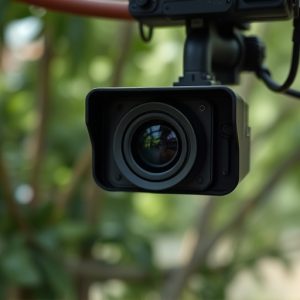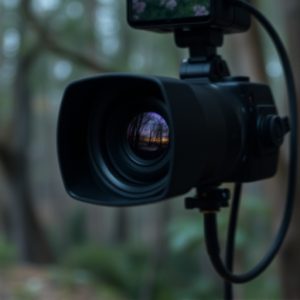Unveiling Hidden Cameras: Creative Decoys & Ethical Surveillance in Rentals
The installation of hidden cameras in rental properties as a security measure raises legal and ethic…….
The installation of hidden cameras in rental properties as a security measure raises legal and ethical concerns regarding tenant privacy. While landlords aim to protect their properties, many jurisdictions have strict laws against surveillance without consent. In response, businesses are adopting convincing decoy cameras, which look like real surveillance equipment but serve as psychological deterrents, enhancing security while preserving tenant privacy. Malicious individuals use sophisticated technology to hide these cameras, so tenants should be vigilant and consider advanced detection tools. Property managers can balance security and privacy by utilizing convincing decoy cameras strategically, creating a safer environment without infringing on residents' rights.
In today’s digital age, landlords and businesses are increasingly resorting to secret surveillance in rental properties. This practice raises significant legal and ethical questions, especially concerning tenant privacy. While hidden cameras may offer security benefits, their covert nature invites controversy. This article explores the legal implications of installing secret cameras in rentals, delves into creative uses of convincing decoy cameras for business purposes, details common hidden camera spots and detection methods, and considers ethical alternatives to address these complex issues.
- Understanding Legal Implications of Secret Cameras in Rentals
- Creative Placement of Decoy Cameras for Business Purposes
- Common Hidden Camera Spots and How to Spot Them
- Ethical Considerations and Alternatives to Secret Surveillance
Understanding Legal Implications of Secret Cameras in Rentals
The installation of secret cameras in rental properties, often hidden within decoy devices like smoke detectors or light fixtures, raises significant legal concerns. While some landlords argue that these measures are necessary for property security and tenant screening, it’s crucial to understand the implications of such actions. In many jurisdictions, placing surveillance equipment without explicit consent from tenants is a clear violation of privacy rights protected by law. Tenants have the right to expect a certain level of privacy in their homes, and any breach can lead to severe legal repercussions for landlords.
In the context of Convincing Decoy Cameras for Business, it’s essential to differentiate between legitimate security measures and invasive surveillance. Landlords must adhere to fair housing practices and inform tenants about any cameras present, especially those recording inside rental units or common areas. Failure to do so can result in lawsuits, fines, and damage to the landlord-tenant relationship. It’s a delicate balance between ensuring property safety and respecting tenant privacy, and landlords should always err on the side of transparency and consent when implementing surveillance systems.
Creative Placement of Decoy Cameras for Business Purposes
In the quest for enhancing security, businesses are increasingly turning to convincing decoy cameras as an innovative solution. These cleverly designed fake cameras mimic the appearance and functionality of real surveillance equipment, but with a twist—they’re strategically placed to deter potential intruders or vandals. By integrating these decoys into rental properties, business owners can create the illusion of a robust security system without actually revealing the location of their actual cameras.
The placement of these decoy cameras is an art in itself. Positioning them in obvious yet subtle locations, such as on walls, fences, or even within simulated surveillance equipment fixtures, sends a powerful message. This strategic approach ensures that any would-be perpetrators think twice before attempting any malicious activities, thereby reducing the risk of security breaches and vandalism. Convincing decoy cameras offer a cost-effective way to bolster security measures while maintaining an air of mystery around the actual surveillance setup.
Common Hidden Camera Spots and How to Spot Them
Hidden cameras in rental properties are a growing concern, with malicious individuals using sophisticated technology to invade tenants’ privacy. While it’s uncommon, it’s important for renters to be aware of potential surveillance spots to protect their personal spaces. Common hidden camera locations include power outlets, smoke detectors, and wall-mounted decor such as mirrors or clocks, which can all serve as decoys for convincing business cameras. These devices are designed to blend in seamlessly with the environment, making them hard to detect without prior knowledge.
To spot these concealed cameras, renters should exercise caution and inspect their living spaces thoroughly. Look beyond the surface; check electrical outlets and switch plates for any unusual markings or attachments, as well as examine seemingly innocuous items like smoke detectors and clocks. Modern technology can be subtle, so it’s crucial to remain vigilant. Additionally, consider investing in advanced detection tools designed specifically to uncover hidden cameras, ensuring peace of mind and a safe living environment.
Ethical Considerations and Alternatives to Secret Surveillance
In the pursuit of property management and security, it’s crucial to balance effective surveillance with ethical boundaries. Secret surveillance, while providing a sense of security, raises significant privacy concerns among tenants. Installing hidden cameras in rental properties can be a double-edged sword; while it may deter crime, it also invades the personal space of individuals who call those places home. In light of this, property managers and landlords should consider more transparent alternatives.
One promising approach is leveraging convincing decoy cameras for business purposes. These are carefully designed to mimic real surveillance equipment but serve as a psychological deterrent without the ethical baggage. By strategically placing these decoys around rental properties, managers can create an environment that discourages unethical behavior while maintaining a sense of security. This way, tenants’ privacy remains respected, fostering a more harmonious living environment.
While secret surveillance in rental properties may raise serious privacy concerns, there are legitimate business reasons that justify the use of hidden cameras. Strategically placed decoy cameras can deter crime and protect property, especially in commercial settings. However, it’s crucial to navigate this practice within legal boundaries and consider ethical alternatives. By understanding common hidden camera spots and the legal implications, landlords and businesses can ensure they maintain a safe environment while respecting tenant privacy. Adopting convincing decoy cameras for business purposes, coupled with transparent communication, can foster security without compromising dignity.


